Jon Stewart on the Pay Czar
This is pretty funny. As usual, we are getting the worst of both worlds: Government control coupled with the very same “excesses” of a free system. If the government regulated executive pay and actually insisted on (the voters’ sense of) fairness, that would be horrible economically but at least it would make sense.
| The Daily Show With Jon Stewart | Mon – Thurs 11p / 10c | |||
| F#@ked or Fixed – Economic Crisis | ||||
|
||||
Full-Length Book Review by Tom Woods
In all the excitement over Rothbard Graduate Seminar this week, I neglected to blog Tom Woods’ over-the-top Mises.org review of my book on the Depression. Here’s a good excerpt:
Although many readers will be able to name at least several important titles on the Depression and the New Deal, I cannot insist strongly enough that there is no book quite like this one. I am not aware of any other book on this subject that both carries the story from the 1920s through World War II and is economically sound throughout.
I always thought that Woods guy was sharp.
Is "the Market" Forecasting Inflation?
* Let’s be frank: Those of us who expect significant price inflation–and very soon–are disagreeing with the market “consensus” as gauged by market prices. But this shouldn’t be a deal breaker. After all, “the market” incorrectly forecast real estate prices for years, and the same for oil prices in the summer of 2008. If I think there is currently an asset bubble in US Treasurys, you don’t dispose of the argument merely by saying, “If you are right, why aren’t people shorting Treasurys?”
* Von Pepe sends this two-handed (you’ll see what I mean) Cleveland Fed paper on using TIPS yields to back out “the market’s” inflation forecast. They hem and haw a lot, but I think they are saying that inflation expectations in the mid-term have risen sharply since late 2008. (However, in an absolute sense they are still tame.)
* What really reassures me in my inflation outlook is today’s CNBC article, which quotes several “experts” who say I’m crazy. When learned market watches merely say I’m misdiagnosing the danger, that’s fine, maybe they’re right. But to say that inflation worries are “insane”? Nah, that sounds like housing boom talk.
Toward a New (?) Theory of Inflation Forecasting
[UPDATE: In the analysis below, I neglected nominal interest rates, which would allow the spot price of gold to rise over time. In my examples it wouldn’t change too much, since short-term nominal rates were so low this year. But I think this might thwart Rothbard’s general critique of Fisher, returning it to the familiar issue of the 0% floor on nominal interest rates–which isn’t where Rothbard felt the action was.]
At the Rothbard Graduate Seminar today we went over Murray Rothbard’s argument in Man Economy & State that the “Fisher relation” is bogus. Rothbard argues that it’s wrong when people say, “If lenders desire a 2% real return, and they expect 5% price inflation, then the nominal interest rate must be 7%.”
Rothbard argues that this is nuts, because the prices of inputs (raw materials, capital goods) would change almost instantly to eliminate any expected future price move. I don’t think Rothbard developed the insight enough, and as it stands I think he is skipping way too many steps to reach his conclusion. However, it inspired the following train of thought:
* Gold is extremely well-suited for long-term storage and has a high market value per unit of weight and volume. Therefore, it can’t possibly be the case that most investors expect the spot price of gold to rise by, say, more than 10% over the next twelve months. If they really believed that, they would stockpile gold now, pushing up its price to the expected future level. With a liquid futures market, the speculators would even more easily eliminate large expected price swings.
* Under this framework, the fact that gold has risen 9% year-to-date does not mean that past injections of money are finally “having an impact.” No, what it means is that the market’s estimate of the spot price of gold on (say) July 1, 2009 increased by 9% from January 2 to June 10. The Fed presumably had a lot to do with the increase of gold’s spot price, but if so it was because of what the Fed did (including their public statements) from January 2 to June 10. How could the market possibly be reacting in February 2009 to things the Fed did in the fall of 2008?
* Obviously the above, breezy analysis is abstracting away from many serious real-world complications. Perhaps one of the biggest is that speculators don’t simply have “an expected spot price of gold” for July 1, 2009. Rather, it would be much more accurate to say that they have a range of possible spot prices, the different partitions of which they assign more or less likelihood.
* I think part of what may be happening in the current environment is not so much that speculators revised their estimate of July 2009 spot prices up by 9% from January to June. Rather, they may have gone from thinking “99.9% chance gold will be $870 and 0.1% chance it will be $2000 on July 1” on January 2, to thinking “99.5% chance gold will be $870 and 0.5% chance it will be $2000 on July 1” on June 15. (Note that there’s nothing special about those numbers; I am just trying to get my point across, not trying to come up with realistic distributions to yield the actual gold spot prices.)
* If the above is what’s going on (perhaps over a longer time frame than simply year-to-date), then this would surely show up in the spreads between call options with various strike prices, right? (Sometimes my intuition leads me astray in derivatives pricing.) If so, does anyone know where to grab this data? If I still had access to a Bloomberg terminal, I think it would be simple to find.
Gold Is Meant to Be Money
Think for a second about how awful government provision of a service is, compared to the market outcome, in fields like education, hospital administration, and automobile production. Now realize that the government has given itself an absolute monopoly in the money production industry.
Without government central planning, the market would naturally return to commodities like gold and silver to serve as the money. In fact, if you first tried to imagine an ideal commodity to serve as money, you would end up describing gold. I will go so far as to say that religious people should seriously entertain the idea that God created gold as a precious gift (HT2 Tom Singleton) to serve as a wonderful instrument to aid His children in their voluntary trading.
Then blasphemous men came along and replaced the Lord’s wonderful handiwork with green pieces of paper featuring the pantheon of U.S. rulers.
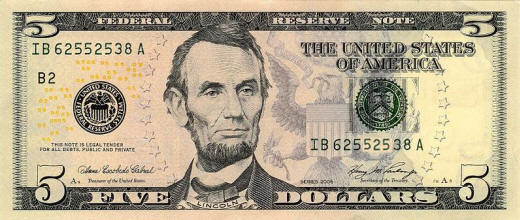
Laffer on Inflation Outlook
I was at first surprised by how similar Arthur Laffer’s analysis in today’s WSJ matches my own, but then I realized that working for him must have shaped the way I analyze certain things. Here’s his conclusion:
Alas, I doubt very much that the Fed will do what is necessary to guard against future inflation and higher interest rates. If the Fed were to reduce the monetary base by $1 trillion, it would need to sell a net $1 trillion in bonds. This would put the Fed in direct competition with Treasury’s planned issuance of about $2 trillion worth of bonds over the coming 12 months. Failed auctions would become the norm and bond prices would tumble, reflecting a massive oversupply of government bonds.
In addition, a rapid contraction of the monetary base as I propose would cause a contraction in bank lending, or at best limited expansion. This is exactly what happened in 2000 and 2001 when the Fed contracted the monetary base the last time. The economy quickly dipped into recession. While the short-term pain of a deepened recession is quite sharp, the long-term consequences of double-digit inflation are devastating. For Fed Chairman Ben Bernanke it’s a Hobson’s choice. For me the issue is how to protect assets for my grandchildren.
Standup in Preschool
Tyler Cowen linked to this. It’s pretty funny and incredibly cute (like Tyler?).
Thinking Outside the Box on Monetary Issues
Deep Thought #1: Let’s assume for the moment that there really is a cartel of international bankers who basically run the various governments and central banks. Wouldn’t it be to their advantage to reproduce the Japanese lost decade in as many places as possible? You get a bad economy, so the public allows you to impose new regulations and spend tons of money to fix it, and yet you don’t suffer the fallout from rapid price inflation. What’s not to like?
Deep Thought #2: Robert Wenzel has really been spot-on for most of this crisis. At this point, I don’t even bother linking every good post. Suffice it to say, Wenzel is just about the only blogger on the planet who (1) knows Austrian economics, (2) follows financial events like a PI, and (3) has a very cynical view of politicians and big business. (For example, check out his take on banks being able to repay TARP money.)
Anyway, Wenzel has been watching M2 for signs of when US price inflation will kick in, and I decided I had no particular reason for preferring the narrower M1 aggregate (which is what I normally plot on this blog, in addition to the monetary base). So I wanted to check whether M2 in fact has been a good predictor of price inflation. I may have blogged about this before, but if so it bears repeating:

If you didn’t know what those lines above represented, wouldn’t you say they were quite clearly things that moved in opposite directions? It’s not perfect, but they are basically mirror images.
And yet the standard monetarist story is that–with a conveniently difficult-to-falsify “long and variable lag”–high/low M2 growth causes high/low price inflation.
Scott Sumner stole my thunder and mocked the “long and variable lag” notion already; I had a few good zingers myself at my talk at the Mises Circle in Fort Worth. But basically, I don’t think it takes 6 months for the market to adjust to a bunch of new money dumped into it. If the Saudis announce that they are increasing production, oil prices respond almost immediately. So why does it take the market a year or two years to change the price of money (i.e. its purchasing power)?
I think the graph above shows that maybe in practice, given the market forming expectations and the Fed officials trying to operate in that environment, what actually happens is that the rising inflation rate causes the Fed to cut down M2 growth. On the other hand, in periods of tame inflation, the Fed can get away with inflating.
To clarify, I am not denying that an injection of money may lead to higher prices after a lag. But I am saying the mechanism is that the demand for money has increased at first, and then later returns to the old level. So for example, both M1 and M2 have risen at a very fast clip since the fall of 2008. But prices actually fell at first, and now are rising at a much more moderate pace. The answer is that people want to hold higher cash balances than they did before Paulson told them the world was ending. When people stop expecting further price declines, then they will want to reduce the size of their holdings, and you will see prices rise at a higher rate, even if (at that time) M1 and M2 aren’t growing particularly quickly.
In one sense, I’m just quibbling about sloppy language, I suppose. But people say stuff like “it takes a while for new money to have an impact.” No it doesn’t. Price deflation would have been a lot more severe in 4q 2008 had Bernanke kept M1 and M2 level.

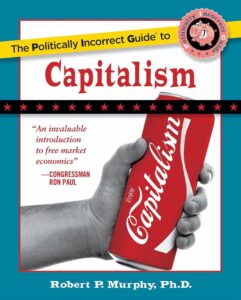
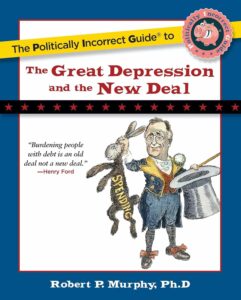
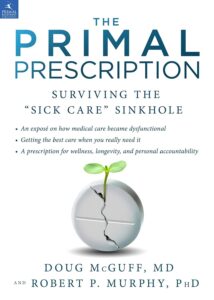


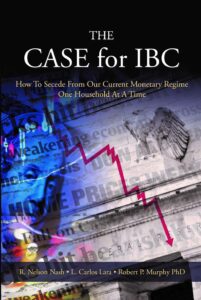
Recent Comments